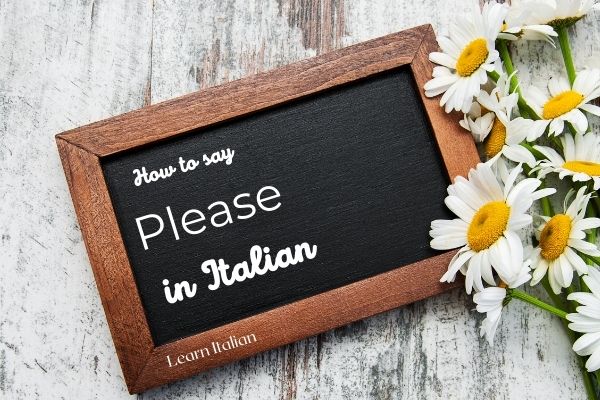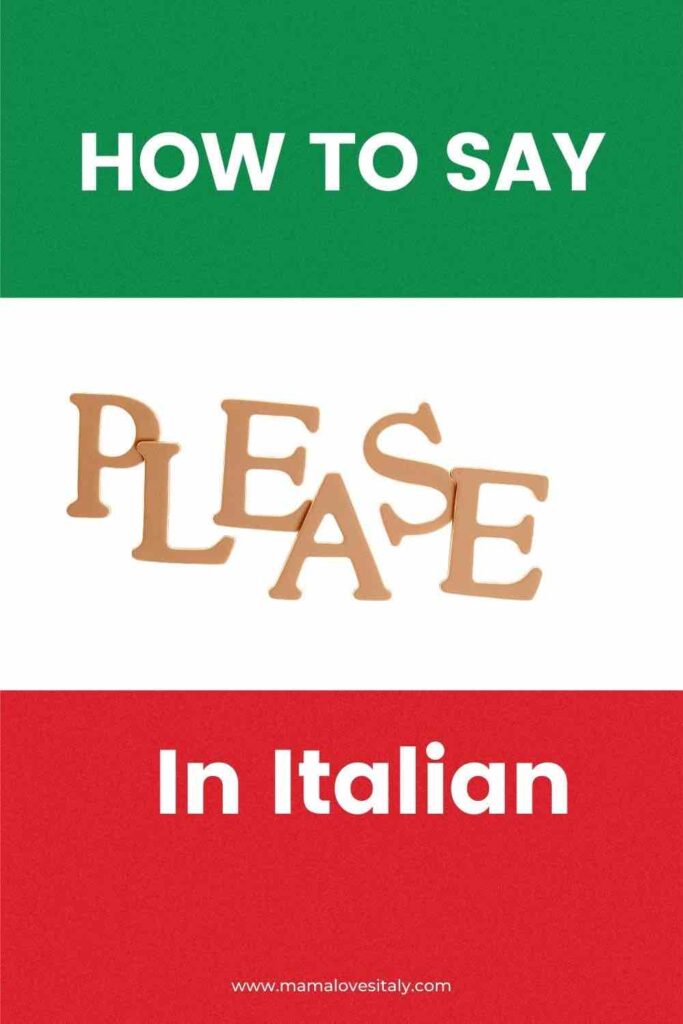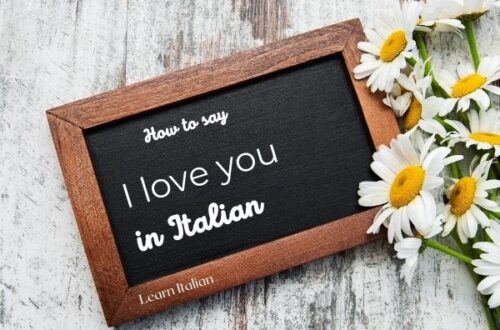
How to say please in Italian
Learn how to say please in Italian with real life examples and sentences you can use while traveling in Italy.
You don’t need to speak Italian to enjoy your time in Italy. However, being able to say ‘please’ and ‘thank you’ is a great skill to have.
We love when people make an effort to learn our language and you will find a little goes a long way, when trying to communicate with a local.
We have learned before how to say ‘thank you’ in Italian so today we look at how to say ‘please’.
How do you say ‘please’ in Italian? ‘Per Favore’
The direct translation of ‘please’ in Italian is ‘per favore’. Hear its pronunciation here.
In the most common use, you add per favore at the end of a sentence and that adds politeness to your request.
For instance, you can express please in Italian as follows:
Un caffe’, per favore – one coffee please
Il conto, per favore – the bill please
Un’informazione, per favore – can you give me info please
In many cases, you can also use per favore at the start of the sentence:
Per facore, ci porta un caffe’ un succo e un cornetto – please, can we get a coffee, a juice and a croissant.
Good to know: unlike English, Italian doesn’t use per favore in the expression ‘yes please’. Instead, we say, Si, grazie (yes, thank you)!
Example: Vuoi un caffe? Si Grazie! Would you like a coffee? Yes please!
Important: ‘favore’ is also the Italian word for ‘favour’ as in ‘would you do me a favour?’ To express ‘please’, it is always preceeded by the preposition ‘per’.
Other ways to say please in Italian
While per favore is the most common way to say please in Italian, there are may other ways to express a polite request in Italian. Some are easy, some a little less straightforward!
Some other easy and common ways to say please in Italian include:
Per piacere
Per piacere – this is an idiom and it does not mean ‘for pleasure’, which is its literal meaning. In the context of a polite request, per piacere means ‘please’.
Mi fa un caffe’ per piacere? – Can I have a coffee please?
Cortesemente or gentilmente
Cortesemente and gentilmente are adverbs which means ‘graciously’ or ‘nicely’
Cortesemente, un caffe’ – please, a coffee
Gentilmente, mi mi porterebbe il conto? Please, can we have the bill
Per cortesia
Per cortesia – similar to the above, it means please in expressions such as ‘per cortesia, mi porta il conto?” please can I have the bill?
Si prega di
This is not an expression you use but one you may come across on signs, regulations and PA announcements.
‘Si Prega di’ literally translates as ‘we beg you to …” and it is a polite way to give a command, similar to the English ‘you are kindly requested to’.
A practical example of its use is: si prega di chiudere il portone (you are kindly requested to close the front door) or si prega di rimuovere le scarpe da sci prima di accedere al ristorante (you are kindly requested to take off your ski shoes before entering the restaurant).
Like in English, this kind request is, in fact, a command and you are expected to abide by it.

If you want to download this coloring page, you can find this and more coloring sheets about Italy here.
Do Italians say please?
As you can tell from the sentences above, Italian say please however, if you listen to conversations at a bar, you may notice the words ‘per favore’ are not used quite as much as you would expect.
This is something my students of Italian as a second language often reported when going out in Rome especially and which caused confusion.
Why do Italians not use per favore, are we just rude? That’s not the case!
The fact is that while we have the word per favore to express ‘please’, the Italian language often expresses a polite request not adding the word please but with a different turn of phrase altogether.
Let’s stay with the ordering coffee example.
When I order my coffee, I can say ‘un caffe’ per favore’.
Most likely, however, I will say something along the lines of ‘mi farebbe un caffe? Grazie’ accompanying the request with a smile.
The sentence translates in ‘would you make me a coffee’ (formal you) and the politeness in the intention is in the tone used and the choice of tens/mode of the verb.
In the case of asking for the bill, I can say: il conto per favore but also ‘mi porterebbe il conto‘? Lit. would you bring me the bill.
As you can see, these sentences without the explicit use of please require fluency and mastery in the use of your Italian verbs. They also run the risk, if you do not get the tone, verb or situation right, to make you come across as demanding and rude.
So if you want to ask something politely in Italian, the safest and best way to do it is to add per favore at the end of your request.
Just do not assume the fact that you don’t hear it as much means we simply bark orders around: we most definitely don’t do and that would not go down well, so please do not do it 🙂
I hope you enjoyed this quick overview about saying please in Italian. Don’t forget you can find many more useful Italian phrases for travel in this essential guide to travelers’ Italian.
How to say please in Italian





